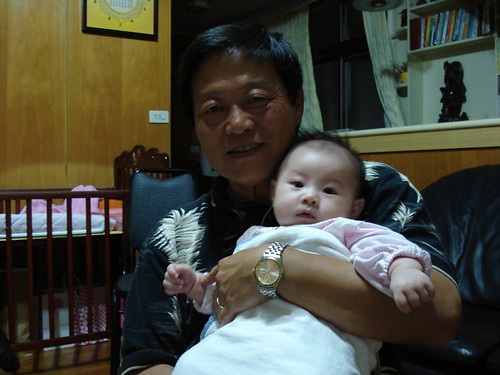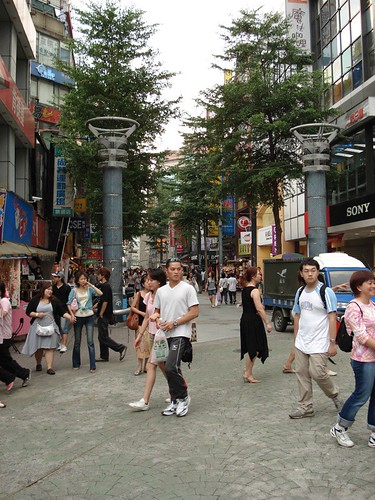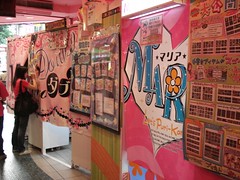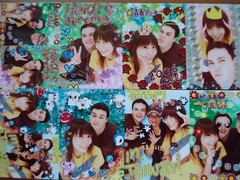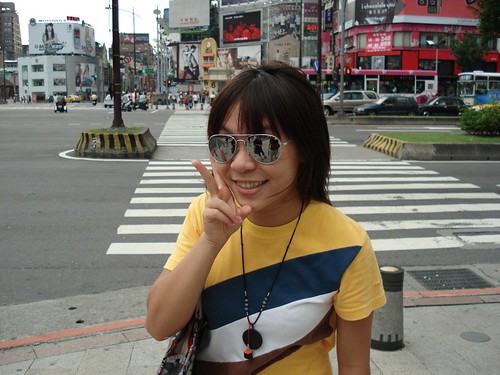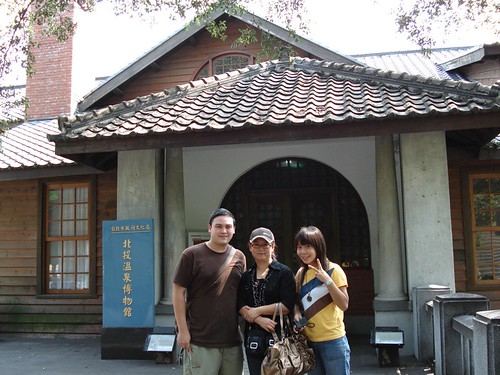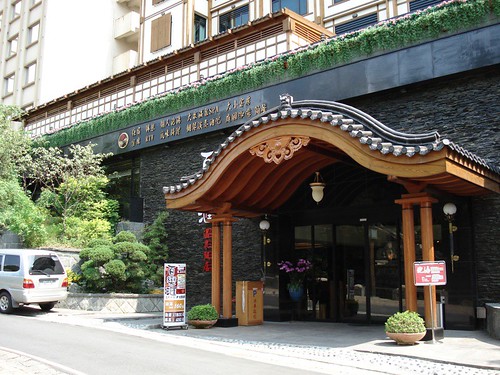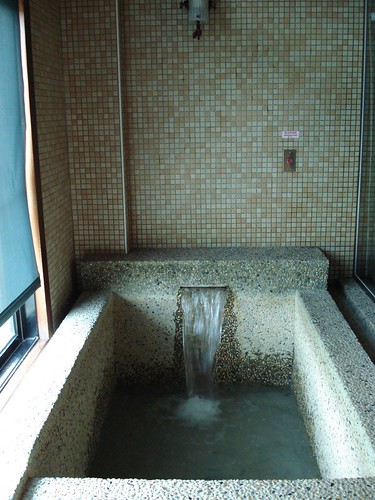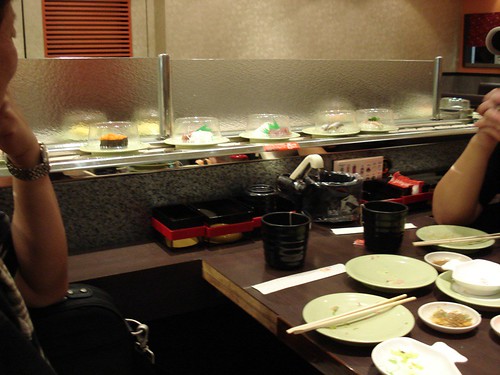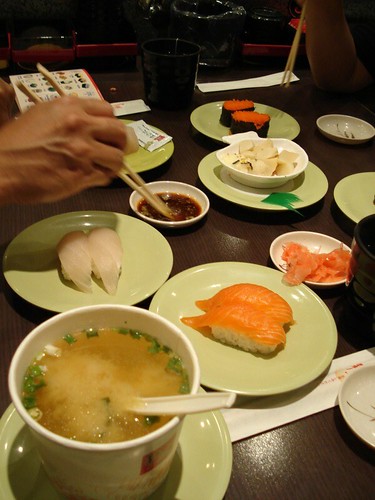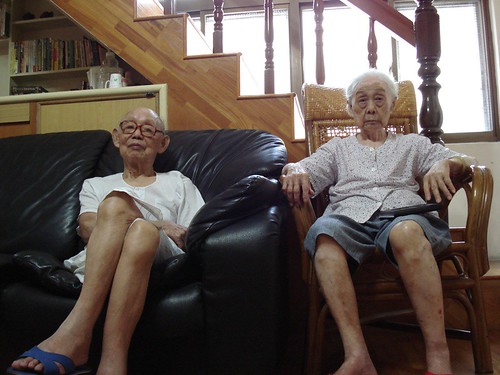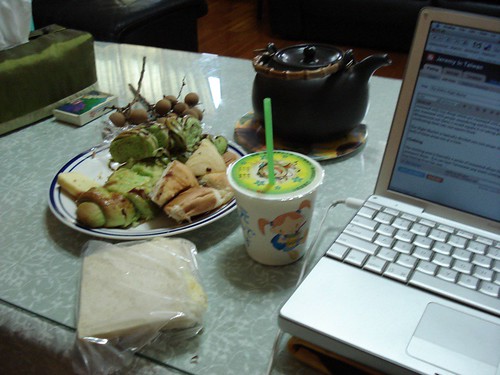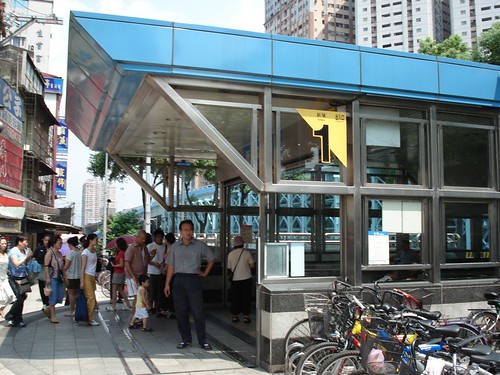
As a New Yorker, if there is one thing I feel comfortable with, it is the subway. Sure, I make the occasional misfire, but for the most part, you have to be on top of your subway navigation in order to survive. Today, Dad and I took a taxi to the closest MRT subway station (they are still building the station that will be closer) to head into Taipei.
Our home station, Xinpu, is located in the southwest suburbs of Taipei. Our destination is the northwestern part of the city, Xin
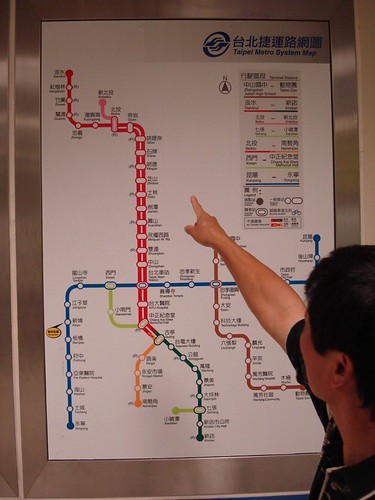
Beitou, where we will meet my cousin and her daughter. The first thing that I noticed about the subway is how
clean it is, especially compared to the NYC subway. This is in part due to the fact that the MRT (Taipei Subway) is a little over 10 years old, compared to the MTA (NYC Subway) which just celebrated its 100th anniversary. It is also due to the fact that no food, drink, or gum is allowed on the subway and it is heavily enforced (there were plenty of security guards everywhere).
We took a look at the map to figure out exactly how to get where we wanted and then headed to the automatic teller to get our tickets. As a subway veteran, I was quickly able to figure out ticketing (that, and the directions were in English). In the MRT, prices are b
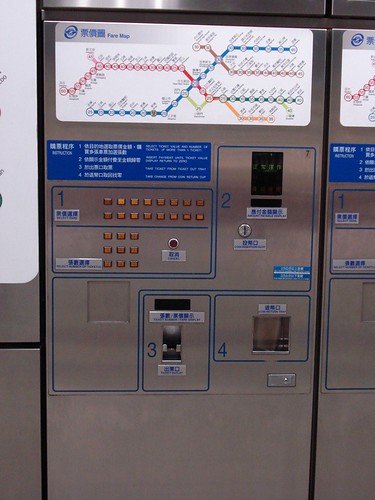
ased on where you begin and end your trip, with trips costing between $20 and $45 NT (about $0.75 to $1.50) depending on how far you go. I helped Dad get his ticket and we walked through the turnstyle.
The platforms, again, are
so clean. They even have flat-panel TVs to tell you when the next train is coming. The trains themselves are again clean and more spacious than MTA trains. There are similarities too, though; adverstisements line the walls and a recorded voice chimes in to tell you what the next station is going to be (similar to the robo-L train).
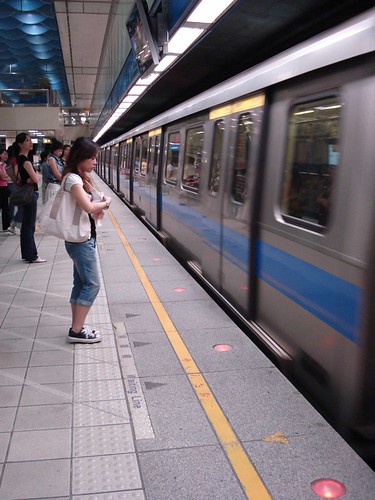
We transferred at Taipei Main Station, which is like the Grand Central Station of Taipei. Here, all the subway and long-distance trains meet, serving as a hub for transportation around the city and the country. It didn't look all that big to me, because the large space is made up of the long corridors between subway lines, rather than the vast, open space of Grand Central.
Like the NYC subway, the trains move above ground as you get further from the city center (think F train out to Coney). We ended up in Xin Beitou, where we met with my cousin and her 18 year-old daughter (my second cousin). From here, we head to the hot sprin
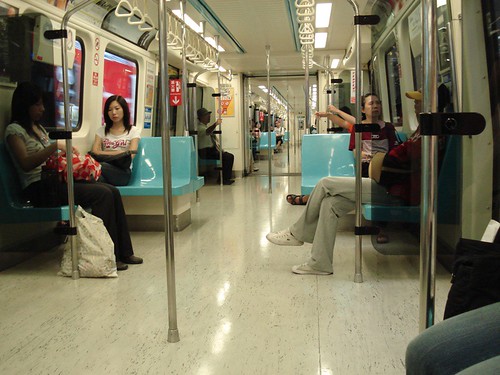
gs.
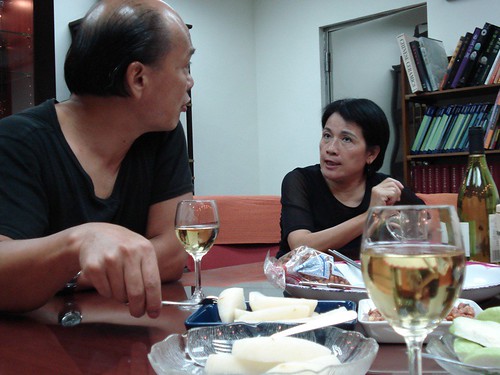 When you have a very large extended family, the meaning of the word "cousin" begins to obscure. You find that this word is too general to truly capture the relationships between relatives.
When you have a very large extended family, the meaning of the word "cousin" begins to obscure. You find that this word is too general to truly capture the relationships between relatives. 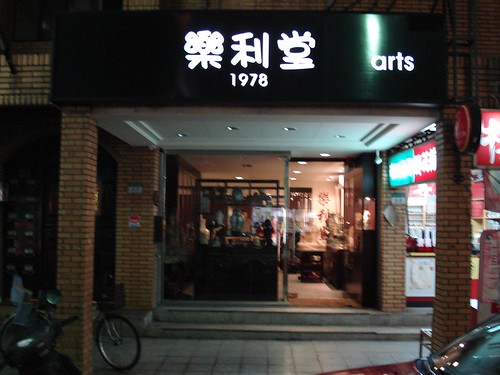 My "cousin" Kunlam is really more like my uncle, as he is just a few years younger than my dad and has kids that are my age (much like my other "cousin" from the previous post). Kunlam picked us up from the subway and brought us to his jade shop near the center of the city.
My "cousin" Kunlam is really more like my uncle, as he is just a few years younger than my dad and has kids that are my age (much like my other "cousin" from the previous post). Kunlam picked us up from the subway and brought us to his jade shop near the center of the city.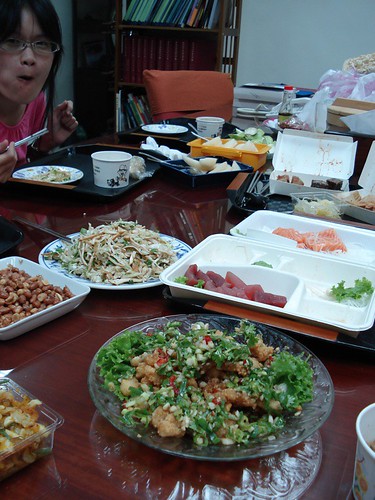 sashimi and various pickled foods. Kunlam's wife brought a tofu cabbage salad and fried octopus salad down for us. The octopus had lots of cilantro, garlic, and chili pepper and was delicious.
sashimi and various pickled foods. Kunlam's wife brought a tofu cabbage salad and fried octopus salad down for us. The octopus had lots of cilantro, garlic, and chili pepper and was delicious. We split a big bottle of Taiwan Beer, which is a lot like Heineken. In my experience, most of the beers in Asia are lagers: Tsing Tao, Tiger Beer, Singha, Sapporo.
We split a big bottle of Taiwan Beer, which is a lot like Heineken. In my experience, most of the beers in Asia are lagers: Tsing Tao, Tiger Beer, Singha, Sapporo.